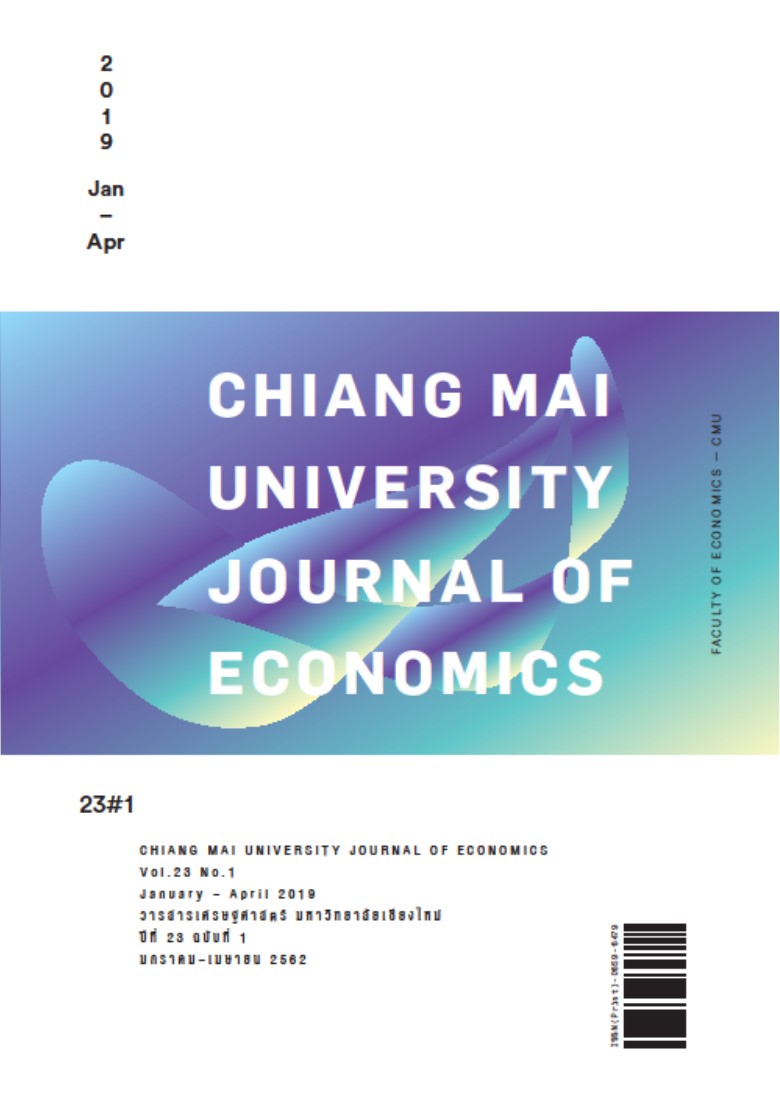Estimating the Willingness to Pay for Conserving Scala Theatre
Keywords:
Scala Theatre, Willingness to Pay, Contingency Valuation MethodAbstract
Scala theatre, opened in 1969, is the last functioning stand-alone cinema in Bangkok. Due to the unique style of architecture, it is worthwhile to conserve. The objective of this research article is to estimate the visitors’ willingness to pay for conserving the Scala theatre as well as to determine factors affecting visitors’ willingness to pay for conserving the Scala theatre. The methodology is to apply the contingency valuation method with the payment card format and to adopt the ordered logit model to estimate such the willingness to pay. With the sample size of 324 Scala theatre visitors, the results revealed that the visitor satisfaction level, the number of household members of the visitor, the marriage status, and the frequency of visits significantly affect the willingness to pay for conserving this theatre. The sample theatre visitors have the average willingness to pay to conserve the theatre approximately 17.43 Baht in addition to the regular movie ticket price. Moreover, it is found that the attractiveness of the movie shown in this theatre, the convenience in travelling to the theatre, and the ticket price received the highest satisfaction level from visitors whereas the environment, the facilities, the safety, and the cleanliness of the theatre need to be improved.
References
Israngkura, A. (1998). Environmental Valuation: What, How and For Whom. Thammasat Economic Journal, 16(4), 55-88.(in Thai)
Jitrojanaruk, P., & Permpoonwiwat, C. (2011). Evaluation of Recreational Value and Entrance Fee of Dusit Zoo. Economics and Public Policy Journal, 2(3), 120-132. (in Thai)
Kamonrattanapon, C., & Seenprachawong, U. (2009). Determining the Entrance Fee for Ayutthaya Historical Park. Kasetsart University Journal of Economics, 16(2), 18-31. (in Thai)
Kim, S. S., Wong, K. K., & Cho, M. (2007). Assessing the economic value of a world heritage site and willingness-to-pay determinants: A case of Changdeok Palace. Tourism management, 28(1), 317-322.
Klamer, A. (2011). Cultural entrepreneurship. The Review of Austrian Economics, 24(2), 141-156.
Mitchell, R. C. & Carson, R. T. (1989). Using Surveys to Value Public Goods: The Contingent Valuation Method. Resources for the Future, Washington DC.
Phadungkarn, K. (2018, January 3). 'Scala Paradiso': Fate and Ambiguity of the last stand-alone theater. Retrieved from https://www.gmlive.com/GMBiZ-Scala-Paradiso. (in Thai)
Raabova, T., Merta, P., & Ticha, A. (2013). Potential Methods for Measuring the Economic Impacts of Cultural Tourism. In M. K. Smith & G. Richards (Eds.), The Routledge Handbook of Cultural Tourism (pp. 100–109). New York: Routledge.
Ready, R. C., Navrud, S., & Dubourg, W. R. (2001). How do respondents with uncertain willingness to pay answer contingent valuation questions? Land Economics, 77(3), 315-326.
Signorello, G., & Santagata, W. (2000). Contingent valuation of a cultural public good and policy design: the case of "Napoli Musei Aperti". Journal of Cultural Economics, 181-204.
Snowball, J. D. (2008). Measuring the Value of Culture: Methods and Examples in Cultural Economics. Berlin, Germany: Springer-Verlag Berlin Heidelberg.
Sukchitpinyo, K., & Chokethaworn, K. (2012). Willingness to Pay for Conservation of Wiang Kum Kam Cultural Heritage. WMS Journal of Management, 1(1), 1-9. (in Thai)
Thai Film Archive Public Organization. (2018, January 15). Film Archive Newsletter. Retrieved from http://www.fapot.org/files/images/news43.pdf. (in Thai)
Tian, X., Yu, X., & Holst, R. (2011). Applying the payment card approach to estimate the WTP for green food in China.
Tuan, T. H., & Navrud, S. (2008). Capturing the benefits of preserving cultural heritage. Journal of cultural heritage, 9(3), 326-337.
Walairat, N. (2018, January 15). Why Lido and Scala threters are dying. Retrieved from https://marketeeronline.co/archives/7749. (in Thai)
Downloads
Published
Issue
Section
License
All opinions and contents in the CMJE are the responsibility of the author(s). Chiang Mai University Journal of Economics reserves the copyright for all published materials. Papers may not be reproduced in any form without the written permission from Chiang Mai University Journal of Economics.
ข้อคิดเห็นที่ปรากฏและแสดงในเนื้อหาบทความต่างๆในวารสารเศรษฐศาสตร์มหาวิทยาลัยเชียงใหม่ ถือเป็นความเห็นและความรับผิดชอบโดยตรงของผู้เขียนบทความนั้นๆ มิใช่เป็นความเห็นและความรับผิดชอบใดๆของวารสารเศรษฐศาสตร์ มหาวิทยาลัยเชียงใหม่
บทความ เนื้อหา และข้อมูล ฯลฯ ในวารสารเศรษฐศาสตร์มหาวิทยาลัยเชียงใหม่ ถือเป็นลิขสิทธิ์เฉพาะของคณะเศรษฐศาสตร์มหาวิทยาลัยเชียงใหม่ หากบุคคลหรือหน่วยงานใดต้องการนำทั้งหมดหรือส่วนหนึ่งส่วนใดไปเผยแพร่ต่อหรือเพื่อกระทำการใดๆ จะต้องได้รับอนุญาตเป็นลายลักษณ์อักษร จากวารสารเศรษฐศาสตร์ มหาวิทยาลัยเชียงใหม่






